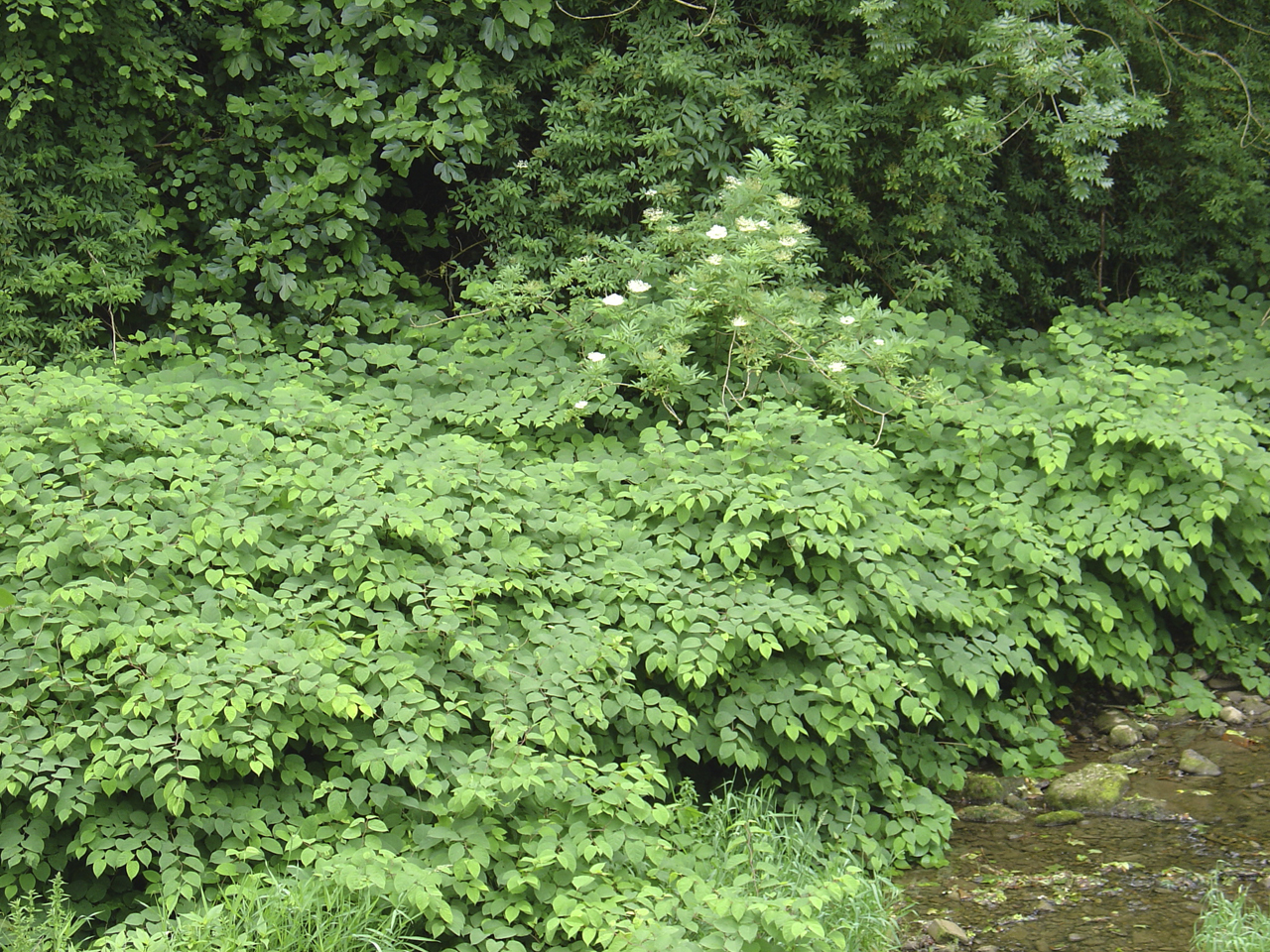Diego Liendo, a researcher in the UPV/EHU's Department of Plant Biology and Ecology, has studied the presence of exotic species in rivers along the Cantabrian coast and has detected a total of 156 species of exotic flora, mostly native to the Americas and Asia.
Over a hundred exotic plant species are invading Cantabrian rivers
Human activity is linked to higher invasion by exotic flora, according to a study by the UPV/EHU-University of the Basque Country
First publication date: 22/09/2017

The phenomenon of biological invasions, in other words, the movement of species beyond their natural distribution limits by humans and their becoming established in these areas, is one of the main environmental problems globally. It is a phenomenon that has intensified in recent decades in particular, as a result of the improvements in intercontinental transport networks and the increase in international trade. In practically any ecosystem in any region of the world there are exotic species that have been introduced and which have the potential to become established and cause ecological and economic problems. "Some non-native species may banish the native vegetation as a result of the invasive behaviour they display. Others, by contrast, do not display this invasive behaviour right now, but they could do so in the future, because the phenomenon of biological invasions takes a long time," said Diego Liendo, the author of the study.
The research has analysed the presence of allochtonous (non-native) species of flora in the area between the river basins of the Nansa (Cantabria) and the Bidasoa (Gipuzkoa-Navarre). The information provided by this work describes the situation of the Cantabrian rivers with respect to the presence of exotic plant species, and could prove useful in the management of these ecosystems. And the fact is that, according to Liendo, not all ecosystems are equally vulnerable to invasion by exotic species; river ecosystems are "particularly vulnerable to these invasions owing to the characteristics of the rivers themselves since the river environment is highly dynamic. Recurrent flooding causes part of the vegetation to be eliminated; this facilitates the entry of these species. What is more, it is a fairly conducive environment given that it is very rich in nutrients and the availability of water is also high".
The study has determined that the degree of invasion is influenced by a range of variables: "the climate (temperature), the environment (average flow width and number of plant communities), and the anthropic variable (proportion of urban land around the stretch and distance from the nearest population centre). It has also been observed that the degree of invasion is significantly higher in industrialised river basins," in other words, there is greater invasion of non-native plants in basins with urban or industrial land located along 50% or more of the length of the river.
A study focussing on the two predominant habitats of the Cantabrian rivers was also conducted: "riverside woods, in other words, the natural woods that grow along the banks of the rivers, and river beaches, deposits that are created along the length of the river and which may be stony, sandy or silty," explained Liendo. With respect to these two habitats, the river beaches have been found to have "a much higher number of allochtonous species than the woods".
New invasive species in the river Urumea
The study has detected a total of 156 species of exotic flora, the majority native to the Americas and Asia. "The salient fact is that 40% of these species have appeared only once," explained Liendo. In addition, species such as the Japanese knotweed (‘Fallopia japónica') have been detected, which, despite not being very common, can cover large surface areas, or the water couch or knotgrass (‘Paspalum distichum'), which may end up almost completely covering some river beaches.
On the other hand, naturalised populations of ‘Muhlenbergia schreberia', a grass of North American origin, have been discovered in the river Urumea, which is the second time this species has been spotted on the Iberian Peninsula. "Until now, it had been reported only in a very localised area of Catalonia. It is a striking result owing to its high frequency in this basin. It is much more widespread than originally thought," added Diego Liendo. In view of the results obtained, the researcher has highlighted the need to monitor the populations of this species "to be able to rate its invasive potential".
Additional information
This research was conducted as part of the PhD thesis of Diego Liendo-Pérez (Castro Urdiales, 1986), entitled ‘Plant Invasion in Cantabrian rivers: drivers and effects on plant diversity and riparian habitats'. His supervisors were Idoia Biurrun-Galarraga and Itziar García-Mijangos, tenured lecturers in the UPV/EHU's Department of Plant Biology and Ecology.



